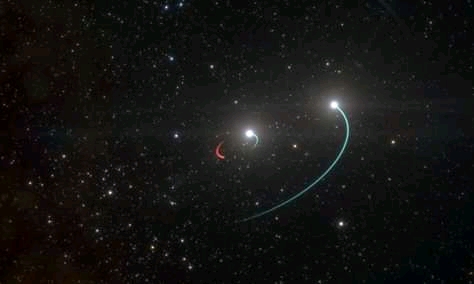Space Calendar June and July 2020
These dates are scheduled by NASA and ESA.
But note these dates might changed so don't mark your calendars based on these schedule.
But note these dates might changed so don't mark your calendars based on these schedule.
June 15: A Chinese Long March 3B rocket will launch a satellite for the country's Beidou navigation network toward geostationary orbit. It will lift off from the Xichang Satellite Launch Center in the country's Sichuan Province, at 10:15 p.m. EDT (0215 GMT on June 16).
June 17: A Chinese Long March 2D rocket will launch China's third Gaofen 9 Earth observation satellite from the Jiuquan Satellite Launch Center, at 3:25 a.m. EDT (0725 GMT).
June 18: An Arianespace Vega rocketwill launch on the Small Spacecraft Mission Service (SSMS) proof-of-concept mission carrying 42 microsatellites, nanosatellites and cubesats. The rideshare mission will lift off from the Guiana Space Center near Kourou, French Guiana, at 9:51 p.m. EDT (0151 GMT on June 19). Watch it live.
June 19: The one-day-old moon will make a close approach to Venus in the evening sky. It will be in conjunction with Venus at 4:53 EDT (0853 GMT). Look for them above the eastern horizon just before sunrise.
June 20: Happy Solstice! Today marks the first day of summer in the Northern Hemisphere and the first day of Winter in the Southern Hemisphere.
June 21: An annular solar eclipse will be visible from parts of Africa and Asia.
June 22: A SpaceX Falcon 9 rocket is expected to launch the ninth batch of approximately 60 operational satellites for the company's Starlink broadband network, along with two Earth-observing satellites for BlackSky Global, in a mission designated Starlink 9. It will lift off from Launch Complex 39A at NASA's Kennedy Space Center in Florida, at 6:20 a.m. EDT (2220 GMT). Watch it live.
June 26: NASA astronauts Chris Cassidy and Bob Behnken will take a 7-hour spacewalk outside the International Space Station beginning at 7:35 a.m. EDT (1135 GMT). Watch it live.
June 30: Asteroid Day
June 30: A SpaceX Falcon 9 rocket will launch the U.S. Air Force's third third-generation navigation satellite, designated GPS 3 SV03, for the Global Positioning System. It will lift off from Cape Canaveral Air Force Station in Florida, at 3:55-4:10 p.m. EDT (1955-2010 GMT). Watch it
PLAY SOUND
July
July 1: NASA astronauts Chris Cassidy and Bob Behnken will take a 7-hour spacewalk outside the International Space Station beginning at 7:35 a.m. EDT (1135 GMT). Watch it live.
July 4: Happy Aphelion Day! Earth is farthest from the sun today.
July 4-5: A penumbral lunar eclipsewill be visible from the Americas and parts of Africa and Antarctica. The moon will begin passing through Earth's shadow on July 4 at 11:07 p.m. EST (0307 GMT on July 5), and the eclipse will last for 2 hours and 45 minutes.
July 5: The full moon of July, known as the Beaver Moon, occurs at 12:44 a.m EDT (0444 GMT). That same day, the moon will be in conjunction with Jupiter at 5:38 p.m. EDT (2138 GMT). The moon will also be in conjunction with Saturn on July 6 at 4:38 a.m. EDT (0838 GMT). The trio will form a small triangle in the night sky before fading into the dawn.
July 8: The "morning star" Venus is at its greatest brightness for the year, shining at magnitude -4.5 in the morning sky.
July 11: The waning, gibbous moon will make a close approach to the Red Planet in the early morning sky. It will be in conjunction with Mars at 3:38 p.m. EDT (1938 GMT).
July 14: The United Arab Emirates plans to launch its first Mars orbiter, the Hope Mars Mission. It will launch from the Tanegashima Space Center in Japan on a Japanese H-2A rocket, at 4:51 p.m. EDT (2051 GMT).
July 14: Jupiter reaches opposition, which means the planet will appear at its biggest and brightest. This happens about once a year, when Jupiter's position is almost directly opposite the sun in the sky. Around the same time, Jupiter will also make its closest approach to Earth.
July 15: The U.S. Air Force will use a Minotaur 4 rocket to launch a classified spy satellite cargo for the U.S. National Reconnaissance Office. Dubbed NROL-129, the mission will lift off from NASA's Wallops Flight Facility in Virginia.
July 17: NASA's Mars 2020 roverlaunches to the Red Planet! It will lift off on a United Launch Alliance Atlas V rocket from Cape Canaveral Air Force Station in Florida. Watch it live.
July 17: The waning crescent moon will be in conjunction with Venus, the "morning star," at 3:27 a.m. EDT (0727 GMT). Look for the pair above the eastern horizon before dawn.
July 20: New moon
July 20: Saturn reaches opposition, which means the planet will appear at its biggest and brightest. This happens about once a year, when Saturn's position is almost directly opposite the sun in the sky. Around the same time, Saturn will also make its closest approach to Earth.
July 23: A Russian Soyuz rocket will launch the 76th Progress cargo spacecraft to the International Space Station. It will lift off from the Baikonur Cosmodrome in Kazakhstan. Watch it live.
July 30: A Russian Proton rocket will launch the Express 80 and Express 103 communications satellites for the Russian Satellite Communication Company.
Join us on our social media platforms
Instagram:
Twitter






Comments
Post a Comment